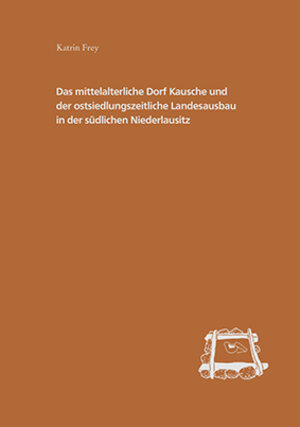
×
![Buchcover ISBN 9783910011724]()
Das mittelalterliche Dorf Kausche und der ostsiedlungszeitliche Landesausbau in der südlichen Niederlausitz
Ergebnisse der Ausgrabungen im Vorfeld des Braunkohlentagebaus
von Katrin Frey, herausgegeben von Franz Schopper, übersetzt von Edward CollinsThe study is a presentation and systematic evaluation of the finds and contexts from excavations in the medieval village of Kausche. Located in the south of Lower Lausatia, the village of Kausche was – until its destruction through opencast lignite mining – the subject of exhaustive archaeological investigation.
An initial reconstruction of the village’s origin is followed by presentation of individual settlement contexts, concluding with a discussion of the pottery and small finds. A section examines questions of cultural-historical relevance.
A significant area of research focuses on the analysis of the ceramics from a region intermediate between areas predominant in globular and wheel-thrown vessels. The results should offer a regional framework for the evaluation and dating of ceramic assemblages. The study is underpinned by dendrochronological dates of a number of the wells and the comparative analyses of finds from the north and south of the region. Kausche clearly lies within a region influenced by the tradition of globular vessels, setting aside the strong influences of wheel-thrown pottery in the early phase of the settlement.
Kausche was founded in a region unoccupied during the Slavic period. Colonisation in Lower Lausatia began shortly before 1200 but intensified through the first half of the thirteenth century. Deforestation and settlement establishment were tightly planned and probably coordinated by representatives of the Wettin Margrave Konrad II. A number of the village’s first occupants were almost certainly from the home lands of the Wettin dynasty.
An initial reconstruction of the village’s origin is followed by presentation of individual settlement contexts, concluding with a discussion of the pottery and small finds. A section examines questions of cultural-historical relevance.
A significant area of research focuses on the analysis of the ceramics from a region intermediate between areas predominant in globular and wheel-thrown vessels. The results should offer a regional framework for the evaluation and dating of ceramic assemblages. The study is underpinned by dendrochronological dates of a number of the wells and the comparative analyses of finds from the north and south of the region. Kausche clearly lies within a region influenced by the tradition of globular vessels, setting aside the strong influences of wheel-thrown pottery in the early phase of the settlement.
Kausche was founded in a region unoccupied during the Slavic period. Colonisation in Lower Lausatia began shortly before 1200 but intensified through the first half of the thirteenth century. Deforestation and settlement establishment were tightly planned and probably coordinated by representatives of the Wettin Margrave Konrad II. A number of the village’s first occupants were almost certainly from the home lands of the Wettin dynasty.


